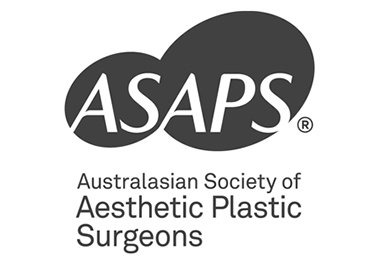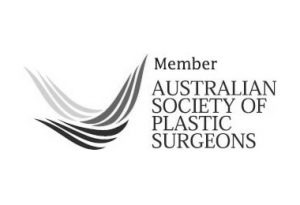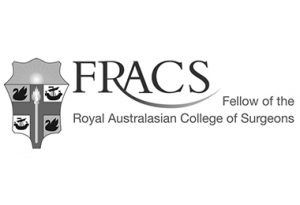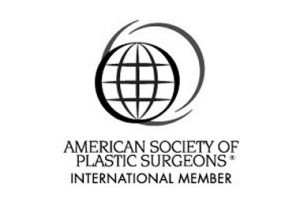EAR PINNING (OTOPLASTY)
Ear surgery aims to set prominent ears back and closer to the head.
Most often, otoplasty is used to address ears that protrude out from the head, but can also be used to target ears that have failed to develop correctly.
The procedure is most commonly performed between the ages of five and 14, but it can be performed on adults of any age.
WHAT’S INVOLVED IN OTOPLASTY SURGERY?
Otoplasty is normally carried out under general anaesthetic as day surgery. The procedure usually takes about one hour.
The operation is usually performed through an incision behind the ear, although other incisions may be used depending on individual surgical requirements.
Cartilage may be removed or re-shaped and the cartilage is then secured with stitches to its new position to bring the ear closer to the head. The incision is then closed with dissolving sutures.
WHO IS OTOPLASTY SURGERY FOR?
Candidates for otoplasty surgery include people who:
-
Have ears that protrude far from the side of the head
-
Have a very large conchal bowl (inside the ear)
When considering otoplasty, make sure you are in good health and that you do not have any medical contraindications to surgery.
You need to understand the possibilities and limitations of surgery and be realistic about post surgical expectations.
What else can be changed with otoplasty surgery?
-
When the ear tip seems to fold down and forward
-
A very small ear
-
When the curve in the outer rim, as well as the natural folds and creases, are missing
-
Large or stretched earlobes
-
Earlobes with large creases and wrinkles
Plastic surgeons can even reconstruct new ears for those who were born without them or who have lost them through injury.
Otoplasty can be performed in conjunction with other facial plastic surgery procedures, and will not alter hearing ability.
POST SURGERY
Post-surgery bandages
- Following surgery, a bulky head bandage is used to promote undisrupted healing
- This bandage is usually worn for around a week after surgery
- It may cause discomfort in hot weather or disrupt sleep if you are used to sleeping on the side
- After removal of the head bandage, a headband should be worn at night for a further 2 weeks
When bandages are removed, the ears will be slightly red, swollen, and tender.
It typically takes a few weeks for the ears to slowly adjust to their final position.
Tenderness can persist for up to 6 weeks after surgery.
Great care should be taken when dressing, sleeping, and brushing hair, and it is best to avoid swimming and contact sports for at least 2 weeks after surgery.
Post operative pain should be minimal because of local anaesthetic used during the procedure. Discomfort is expected, but if it increases to pain and persists, please get in touch with your surgeon.
SPECIFIC RISKS OF OTOPLASTY
Swelling and bruising
Moderate swelling and bruising after otoplasty will make the ears appear puffy and purple in colour when the bandages are removed. This appearance resolves in a short period of time.
Severe swelling and bruising may indicate a complication.
Discomfort and pain
Mild to moderate discomfort or pain is normal after ear surgery. The rapid onset of persistent, unilateral pain may indicate a complication like a collection of blood (haematoma), infection or allergic reaction.
If the bandages are in place, removal will be necessary to determine the cause.
Nausea and loss of balance
Nausea and loss of balance is a common, usually temporary phenomenon following otoplasty. It is related to swelling around the inner ear and the bandages around the head.
Skin irregularities
Skin irregularities and depressions may occur after otoplasty. Visible and palpable wrinkling of skin and ear cartilage can occur. Further surgery may be required to correct the irregularities.
Bleeding and haematoma
Persistent bleeding under the skin may result in a collection of blood (haematoma).
A haematoma will cause sudden and persistent pain on one side or a blood-stained discharge coming from under the bandages. Haematomas will cause skin necrosis (loss) due to pressure created on the skin.
Bandages will require removal and the collected blood will need evacuation in the operating room under anaesthetic.
Treatment with antibiotics will be necessary. A haematoma will delay healing, cause scarring and influence the final aesthetic outcome of otoplasty.
Infection and chondritis
Infection occurring after otoplasty may present as onset of pain in one ear on the third or fourth day following surgery.
-
Skin infection may result in chondritis (underlying cartilage infection)
-
Chondritis may lead to the devitalisation of cartilage and secondary ear deformity
-
The resulting ear deformity may require further surgery
-
Treatment with oral antibiotics will be required
A more severe infection with pus and surrounding skin redness will require aggressive treatment with intravenous antibiotics, surgery to release pus, washout under the skin and remove deep sutures and devitalised cartilage under an anaesthetic.
To prevent infection, washing skin and hair with antibacterial solution is required for 2 days prior to surgery and perioperative antibiotics will be prescribed.
Previous episodes of ear infection (swimmer’s ear, otitis externa) should be mentioned to the surgeon. Swimming pools should be avoided for 4 weeks after otoplasty.
Recurrence of protrusion
The incidence of recurrence of protrusion is in the order of 3% and may relate to suture complications or infection. Further surgery may be required.
Long term effects
Subsequent changes in the appearance of the ears may occur as the result of ageing or other circumstances not related to otoplasty surgery.
Suture granuloma and extrusion
Deep sutures under the skin may occasionally extrude or form a granuloma (lump) before they dissolve. The offending suture is removed with no effect to the final result.
Persistent pain
Very infrequently, chronic pain may occur from nerves trapped in scar tissue after an otoplasty.
Skin necrosis
Devitalisation or loss of small areas of skin can occur if there is excessive pressure from dressings that are too tight.
The skin loss will result in a scab or ulcer that will take several weeks to heal. Treatment with ointment and antibiotics may be required. Skin loss can also occur from an underlying haematoma or infection.
If skin loss is extensive, further surgery will be required.
Hypertrophic scars and keloids
The scar following otoplasty is usually hidden in the groove between the ear and the side of the head.
Keloid scar formation and hypertrophic scarring develop in about 2% of people who have otoplasty, especially young, darkly pigmented persons.
Tight skin closure or infection may contribute to keloid scar formation. Additional treatments including serial steroid injection into the scars or scar revision surgery may be necessary to treat abnormal scarring.
Ear tenderness and numbness
Tenderness of the ears is common after ear surgery and may last beyond 6 months from the time of surgery.
Numbness or a temporary reduction in skin sensation is common after ear surgery. Return of sensation may take up to 18 months from the time of surgery.
Ear trauma
Physical injury after otoplasty can disrupt the results of surgery.
Care must be given to protect the ears from injury during the healing process and night-time bandaging of the ears is recommended for a period after the initial bandages are removed.
Additional surgery may be necessary to correct damage.
The undesirable result
Following surgery, the ear may have minor under corrections to the upper and lower parts causing a telephone deformity. Other minor under corrections can result in residual protrusion of the lobe or the top of the ear.
Minor over corrections to the upper and lower poles can result in a reverse telephone deformity.
Other unfavourable results may relate to a complication like infection or early trauma.
You may be disappointed with the results of surgery and, while rare, it is necessary to perform additional surgery to improve your results.
Constipation
For adults who normally take medication for bowel problems, you will need to bring these medications to hospital with you. It is common to develop constipation after surgery that may require treatment.
Prevention of constipation begins on the day of surgery and continues until the bowel returns to ‘normal’ function, which is usually once the need for pain medication ceases.
Medications for constipation such as coloxyl and senna or lactulose can be purchased from your local chemist without a prescription.
Eat fresh fruit and vegetables, take extra fibre and increase exercise. Drink plenty of water, providing you are not on restricted fluids for any reason.
Pain relief at home
Pain, aches and discomfort may still be present when you (or your child) leaves hospital and may continue for several weeks.
It is important when you are at home to maintain control over the pain, aches and discomforts.
Drugs for pain relief vary in strength and can “generally” be related to pain severity, BUT remember also that individuals have differing responses to pain and pain-relieving medications.
It is usual for children to have mild pain only following an otoplasty.
Mild pain relief will be required for mild pain. Such pain-relieving medication includes panadol, paracetamol, panamax and panadeine.
If you (or your child) has persistent unrelieved pain they may need to be seen by a doctor to exclude another cause for the pain.
Pain relief in hospital
Pain and discomfort is expected after surgery. The amount and severity of pain will vary between patients.
Narcotics (morphine, pethidine, fentanyl) are used to relieve pain. Narcotics are not addictive in the amounts required to relieve pain.
Any initial severe pain and discomfort will be managed with intravenous medication such as morphine, pethidine or fentanyl.
You (or your child) will be given pain-relieving medication before discharge from hospital.
Other
It is important that you try to retain your identity as a person whilst in hospital. Make sure you ask plenty of questions about what is happening to you or your child.
Feel free to share any concerns with the nurses, doctors and other professionals who are involved in your care.
AFTER OTOPLASTY SURGERY
Upon waking
When you wake up from surgery, you will have dressings around your ears and head. You will be placed in bed in a head up position with pillows behind your head.
Sleeping tablets
One or two sleeping tablets (Normison, Temazepam, Ativan) may be taken at night, if necessary, to help with sleeping in the first few days after surgery.
Discomfort
You can expect to have some discomfort when you wake up after otoplasty. You will be placed in a position where your head is elevated to help minimise pain and discomfort. Move your legs to keep the circulation flowing and take deep breaths to expand the lungs.
Care should be taken when moving around in bed. If pain develops, tell your surgeon.
Other medications
Your surgeon may prescribe a course of prophylactic (preventative) antibiotics.
Pain relief
You will need to take painkillers as provided.
It is recommended that you avoid aspirin or aspirin-based products for pain relief, as they will promote bruising and bleeding.
Common medications given post-surgery consist of Panadol, Panadeine, Panadeine Forte, panamax, Di-gesic, and Endone.
These medications may be combined with anti-inflammatory medications like Vioxx, Celebrex, or Brufen.
Make sure that you have a postoperative pain regime at the time of discharge and that you understand the medications that you are taking and what they are designed to do for you.
Nausea and vomiting
Nausea and vomiting may be due to the anaesthetic or post-operative medication (like painkillers or antibiotics). Apart from being unpleasant, vomiting will cause an increase in swelling. Medication to prevent nausea and vomiting may be required.
If prolonged, nausea and vomiting may be related to a complication like infection and may cause dehydration. You need to inform your surgeon of prolonged nausea and vomiting.
Bruising
Bruising of the ears after otoplasty will still be evident when bandages are removed post operatively. Most bruises will resolve by 2 weeks.
Gentle massage with a moisturising lotion (Sorbolene), twice daily may help to dissipate bruising.
Bleeding or ooze
There may be ooze of blood from any of the suture lines and this may appear from under the bandages. Any ooze coming from beneath the bandages should be reported to your surgeon.
Swelling
Swelling can occur for 4 to 6 weeks after otoplasty and sometimes, intermittent swelling may take up to 6 months to settle. Speak to your surgeon about how long swelling should take to resolve.
Swelling lasting longer than this time may be due to a complication, and should be reported to your surgeon.
Dressings
Dressings following otoplasty are usually removed a week after surgery.
Surgical bandages should not be disturbed prior to removal by your surgeon. Please ask your surgeon how long the dressings need to stay on.
After removal of your bandages you may need to bandage the ears at night for 2 weeks to prevent sleeping on bent up ears. Check with your surgeon if you are able to shower.
Readmission to hospital
It is rare that you will need to be readmitted unexpectedly to hospital.
The most common cause is persistent nausea and vomiting, anxiety, the need for unexpected additional pain relief, or for treatment of unexpected complications of surgery such as bleeding, wound problems or infection.
Sutures
Sutures may be beneath the skin and will absorb with time. The aim of absorbable sutures beneath the skin is to provide wound support for a longer time than external skin sutures, so that scar stretch is minimised.
Occasionally, the body will want to extrude these sutures.
A sore or a pimple on the suture line may indicate an underlying suture trying to break through the skin. This suture can easily be removed. Antibiotic ointment or Betadeine may be required until the area heals.
Sutures may be present in the skin. These sutures will require removal at some stage after the bandages are removed. The normal time frame is 6 to 10 days depending on the surgery and the location on the ear.
Suture removal is usually arranged with the surgeon. You will be able to shower and wash your hair after suture removal.
Cleaning
Having a shower and getting your sutures wet may be permitted by your surgeon after the dressings have been removed. An antibacterial soap (Sapoderm, Gamophen) may be recommended.
You will need to pay attention to washing and carefully drying the suture line with a clean cotton bud.
Antibiotic ointment (chloromycetin ointment) or soft white paraffin (Vaseline) may be applied along the suture lines to moisten and remove any crusts.
Please ensure that you follow your surgeon’s instructions about wound care.
Travel
Otoplasty is commonly performed under general anaesthesia and as day surgery.
If you are going home after day surgery, a family member or friend must drive you because you have had an anaesthetic. Someone should also stay overnight with you for this same reason.
You may need help from a relative or friend at home during the first few days after your otoplasty. If you have any questions about these matters, please speak to your surgeon.
Anaesthetic effects
The effects of an anaesthetic may still be present 24 hours after your procedure, even if you do not feel them.
Your reflexes will be slower and you are at risk of injury. It is illegal to drive while under the influence of a drug (even a prescribed one) and you could be charged.
Do not make important decisions or sign legal documents for 24 hours after an anaesthetic.
Take care with alcohol intake after surgery because medications and alcohol may interact with the residual anaesthetic. Discuss your normal medications with the anaesthetist.
Activity
Too much activity too soon will risk delays in healing or increase the risk of complications.
Try to walk upright and avoid bending. Sleep with your head up, with a few pillows behind your head. Avoid any straining or rushing around. You may go to the bathroom, walk around the house sit and watch TV, etc., but no matter how good you feel do not clean the house, engage in heavy manual work, go to the gym etc. for 4 weeks following your surgery. For adults, this also applies to sexual activity.
Sport
Slow walking on the flat for exercise is often therapeutic in the early post-operative period. More strenuous exercise like fast walking, running, swimming or tennis may commence after 2 weeks.
Please ask your surgeon when you can start exercising.
Diet
Your post-operative diet should consist of fluids initially then soft food that is easy to prepare.
If you have any postoperative nausea, carbonated sodas and dry crackers may settle the stomach.
Vitamins
Although not proven, there is some suggestion that multivitamins prior to and after surgery may aid in wound healing. Avoid mega dosing on vitamins prior to surgery.
Alcohol
Medications and alcohol may interact with the residual anaesthetic and prescription pain medicine.
Alcohol also dilates blood vessels and may increase the risk of postoperative bleeding.
It is recommended that you avoid alcohol for the first three days after surgery and restrict your alcohol intake for the first month.
Smoking
Smoking reduces capillary blood flow to the skin and may result in delays to wound healing or complications of your surgery.
Smoking not only affects wound healing; it also increases the risk of bleeding, wound infections, post-operative chest infections.
Any coughing may cause bleeding. Smoking also increases the risk of developing a blood clot in the legs that can travel to the lungs.
It is recommended that you cease smoking at least 4 weeks prior to your surgery and for 4 weeks after.
Driving
It is recommended that you do not drive until you are confident that your vision is normal and no longer blurry.
To be able to drive safely you must have full use of your reflexes to drive, and any post-operative discomfort will inhibit your reflexes. If you have any doubt, don’t drive.
You may resume driving when you feel you are able, but it is advisable to discuss this with your surgeon or check with the road traffic authority first.
Recovery time
You must allow yourself adequate recovery time.
You will have a bandage around your ears for one week after your otoplasty. Too much activity too soon will increase the risk of complications such as bleeding and delayed healing.
It would be wise to ensure you have adequate time off work (or school for children) to allow sufficient time for your body to recover from the effects of surgery.
Discuss the expected time for recovery with your surgeon prior to your surgery and allow plenty of time for adequate recovery.
Healing
Everyone heals at a different rate.
The ability to heal is variable and depends upon a number of factors such as your genetic background, your weight, your overall state of health and lifestyle (exercise, diet, smoking, drinking, etc.).
Your attention to preparing yourself for surgery will be reflected in your post-operative recovery.
Many people believe the surgeon “heals” the patient. Not one person can make another heal. Your cooperation and close attention to pre and post-operative instructions is extremely important and is in your best interest.
Support from family and friends
Support from family and friends can be very helpful, but because they may not understand what constitutes a normal postoperative course, their comments may unintentionally create emotional discomfort for you.
The staff at the surgery and your surgeon will tell you honestly how you are doing and what to expect.
Please trust in your surgeon’s knowledge and experience when your progress is discussed with you.
Following instructions
A major factor in the course of healing is whether you follow the instructions given by your surgeon and the nurses in the surgery.
Such guidelines are designed to promote the healing process and to prevent the occurrence of anything that may interfere with your recovery.
It is imperative that you recognise that you are a partner in this process and have a responsibility to follow instructions carefully. The instructions, based on broad experience, are designed to give you the best opportunity for healing without delay or surprise.
Depression
Depression is a normal reaction to surgery. The third day following your surgery may be the worst. You may be teary. It is not uncommon to experience a brief period of “let-down” or depression after any surgery.
You may subconsciously have expected to look and feel better “instantly,” even though you rationally understood that this would not be the case.
Day 3 post surgery may be the worst. As healing occurs, these thoughts usually disappear quickly.
If you feel depressed, understanding that this is a “natural” phase of the healing process may help you to cope with this emotional state.
Complications
Complications are infrequent.
When complications occur, it is seldom a consequence of poor surgery or poor postoperative care. Complications are more likely to be a result of the variable healing capacity or a failure to follow post-operative instructions.
You will be assisted in every way possible if a complication occurs.
Should the unexpected occur, please understand that it is important to follow the advice of your surgeon and nursing staff in order to treat it as effectively as possible. They will ensure that you have support and assistance during this difficult time.
Appointments
It is very important that you follow the schedule of appointments established for you (or your child) after ear surgery.
Appointments to see the nurse or the surgeon should be made before or immediately after discharge from hospital. The review appointment may be the next day or up to one week following surgery.
If no appointment has been made, you must ensure that you contact your surgeon and make a follow up appointment. If you have any concerns, don’t feel that you are bothering the surgeon or the staff.
If need be, you (or your child) can be seen prior to any arranged review appointment to sort out any concerns.
Make an enquiry
DR HERTESS MEMBERSHIPS





CONTACT DETAILS
Contact Number: (07) 5601 0492Email: enquiry@drhertess.com.au
Address:
Ground Floor, 220 Ashmore Road, Benowa QLD 4217
